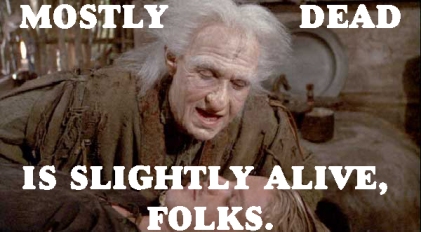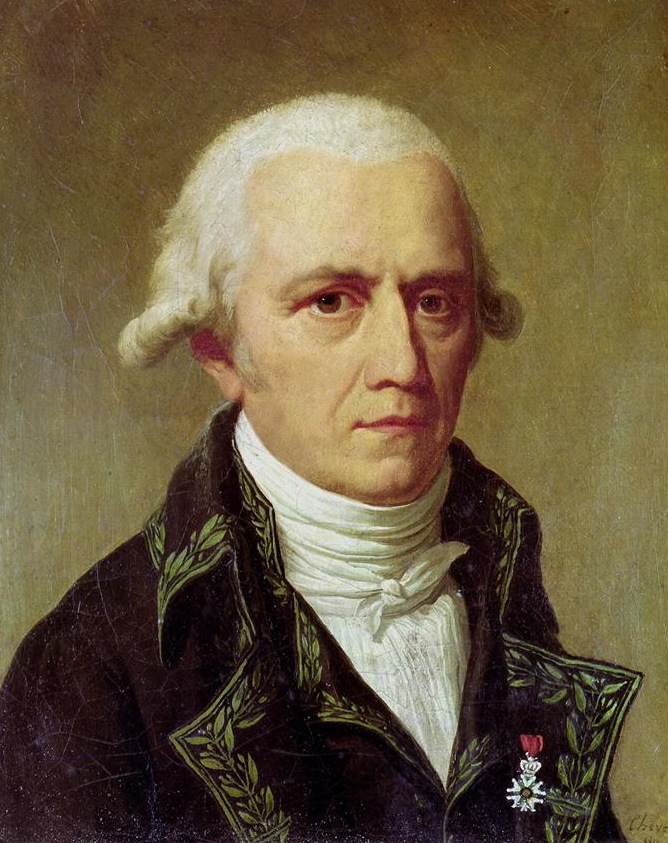New & Noteworthy
Make Some More Room for Lamarck
July 17, 2017
For most people, a move to Tibet or other high altitude places is a real struggle. They suffer the many nasty symptoms of high altitude sickness while they are there.
Some people though, like natives of Tibet or of the Andes, have adapted to the extreme altitudes through natural selection and do just fine. How they adapted is a typical Darwinian story.

Lamarck’s theories are only mostly dead which means they are slightly alive. from the Brick In the Sky blog (https://thebrickinthesky.wordpress.com/).
Those who happened to have the right set of DNA did better than those who didn’t and so had more kids. Over time, the beneficial DNA became more common until the population was able to tolerate the low oxygen of the higher altitudes. (In Tibet, they may have acquired this helpful DNA by having kids with our close relatives the Denisovans.)
Imagine instead that the story went a bit differently. In a Lamarckian twist, let’s say that people who live in low oxygen were more likely to gain the traits needed to do well in this environment, strictly as a result of there not being enough oxygen around. In other words, the environment would make it more likely for the beneficial changes to happen.
Turns out this might have been the way the story went if people were more like yeast. And if dealing with low oxygen environments relied on a gene near a place in the DNA where replication forks often stalled. And if that the gene was upregulated in low oxygen.
It is under these conditions that Hull and coworkers found that yeast could preferentially develop the right mutations in an environment-dependent way. Instead of low oxygen though, these authors studied the yeast growing in high levels of copper.
One way that yeast deal with toxic levels of copper is to turn up the CUP1 gene. Or more precisely, turn up their tandem arrays of multiple copies of CUP1.
This last point is important because it hints at how yeast can increase the likelihood of beneficial mutations at CUP1 in the presence of copper. The increased transcription of the CUP1 genes increases the likelihood of a change in the copy number of these genes. Those yeast with increased copy number thrive in their new copper-tainted environment.
Now of course not every gene ends up with an increase in beneficial mutations just because it is induced. No, the gene also seems to have to be near where a DNA replication fork is more likely to stall. It is this combination of high rates of transcription and stalled DNA replication that can lead to changes in gene copy number.
The first thing the authors did was to map out where replication forks tend to stall in the yeast genome. These sites are marked by the presence of S139-phosphorylated histone H2A (γH2a).
Using chromatin immunoprecipitation sequencing (ChIP-seq) for γH2a they showed that likely stalling spots were within 1,000 base pairs of around 7% of the genes of Saccharomyces cerevisiae. These genes tend to be expressed at low levels under optimal conditions and higher levels under less ideal growth conditions. One of these genes is CUP1.
It is well known that when yeast are put into a high copper environment, the end result is yeast with more copies of the CUP1 gene. But this could simply represent the few cells that happened to have extra copies that then outgrow their compatriots with fewer copies. Ordinary old Darwinian selection.
What these authors wanted to show is that it is increased transcription that leads to increased copy number and not the selective pressure. They get at this a couple of different ways.
In the first approach, they introduce multiple copies of a Gal-inducible reporter at the CUP1 locus. In this system there is increased transcription in the presence of galactose, but no selection.
They found multiple colonies with changes in the copy number of the reporter gene with galactose and no differences in copy number with glucose. So, transcription matters.

Lamarck was only mostly wrong when it comes to evolution. Occasionally beasts can pass on traits they acquired over their lifetime. From Wikimedia Commons.
The second way they attacked this problem was by killing off any daughter cells to get rid of the problem of selection. In this strategy copy number mutants do not get a chance to outgrow their lower copy number sisters. Only the original mother cells remain.
Any increase in copy number would not be due to run of the mill Darwinian selection. Instead, they would be due to the presence of the factor in the environment the cells need to adapt to. And this is just what these authors saw happen.
They eliminated daughter cells using a mother-enrichment system in which daughter cells are killed in the presence of beta-estradiol. They treated a population of cells with beta-estradiol and then put half in normal media and half in media with 1 mM copper sulfate.
They found about a 9-fold increase in the number of copy number variants (CNV) in the presence of copper (27% CNV events compared to 3%). They did follow up experiments to show that copper was not acting as a mutagen—the copper had to induce transcription to cause the copy number variation. And judging by the bud scars, it looks like the cells divided more in the absence of copper, meaning this 9-fold increase is an underestimate.
So growing in the presence of copper increased mutations in the CUP1 gene that allowed the yeast to grow better in copper. Calling Doctor Lamarck!
We don’t have time to go into the rest of the experiments they did to flesh out their findings. For example, they show that this copy number variation can still happen even when they use tandem arrays that are much shorter than the usual 13 CUP1 copies. And that deletion of the H3K56 acetyltransferase RTT109 completely eliminates the effect of copper on the expansion of CUP1. And so much more! Anyone interested should definitely read the article.
These findings show us another example of Lamarckian selection. The environment itself causes the adaptations needed to prosper and these adaptations can be passed on. Not quite the ancestors of giraffes passing on their stretched necks to the next generation but still pretty cool.
The awesome power of yeast genetics again shows us something new about how life adapts and evolves. #APOYG
by Barry Starr, Ph.D., Director of Outreach Activities, Stanford Genetics
Categories: Research Spotlight
Tags: ChIP-seq , copper , copy number variants , CUP1-1 , CUP1-2 , Darwin , histone , Lamarck , replication fork , RTT109